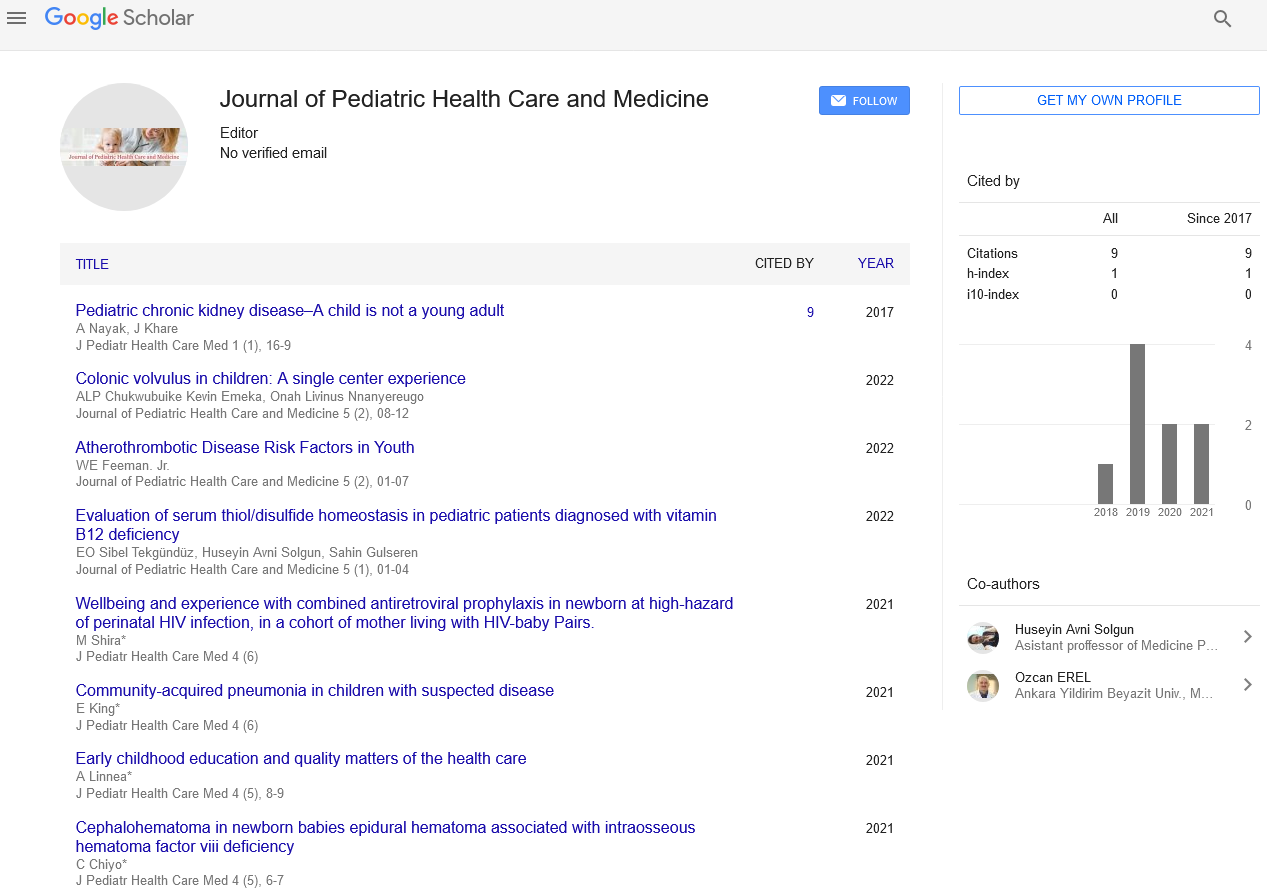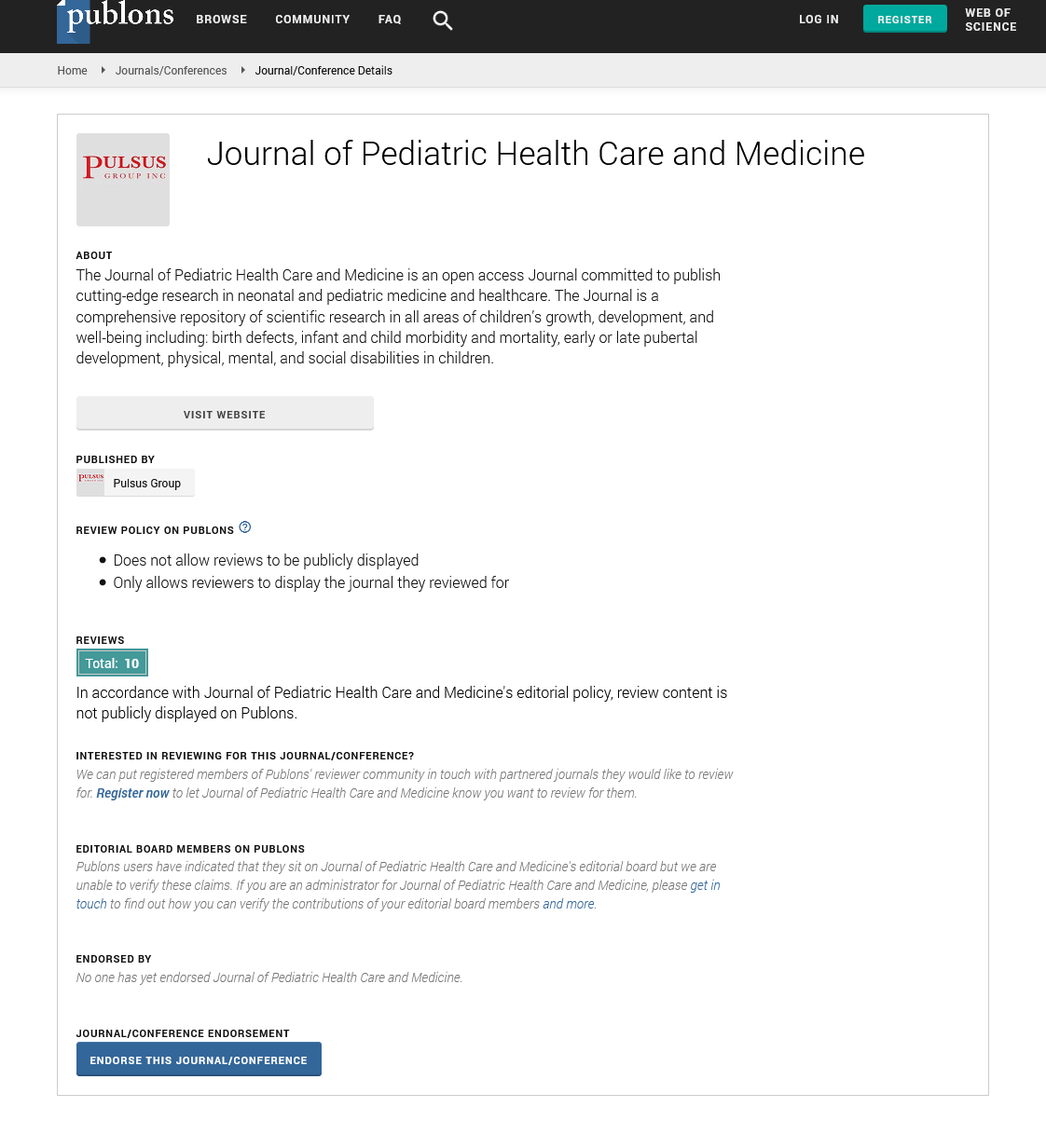
Sign up for email alert when new content gets added: Sign up
Abstract
Moving toward newborns at risk of hyperinsulinemic hypoglycemia
Author(s): Michael Shah*A neonatologist assumes a basic part in the administration of children with hypoglycemia. Albeit neonatal hypoglycemia has been traditionally characterized as glucose ≤2.5 mmol/L, levels ≤2.8 mmol/L among children raise worries of neuroglycopenia, supporting the Pediatric Endocrine Societies' idea to target plasma glucose levels >2.8 mmol/L in at‑risk babies <48 h old enough and >3.3 mmol/L for those matured >48 h. The neonatologist needs to distinguish at‑risk babies and enlist them into a pathway that guarantees protected, physiological progress to extra uterine life. Physiological progress is early enteral taking care of, exploring the glucose nadir while keeping up with mother-youngster holding. Smooth umbilical to enteral progress of glucose homeostasis following birth needs satisfactory glycogen stores and suitable counter‑regulatory chemical reactions. At the point when stores are lacking and counter‑regulatory reactions fall flat, glucose guideline becomes more reliant upon suitable β‑cell reactions. Nonetheless, β‑cell dysregulation may cause improper insulin emission when hypoglycemic (hyperinsulinemic hypoglycemia [HH]) that can be transient, delayed, or relentless. The larger part contains transient and delayed types of HH that recuperate in days to weeks with takes care of or short‑term parenteral glucose mixture or seldom with the utilization of KATP channel agonist, diazoxide. The minority with persevering structures might have hereditary transformations in somewhere around 12 qualities (ABCC8, KCNJ11, GLUD1, GCK, HADH, SLC16A1, UCP2, HNF4A, HNF1A, HK1, PGM1, and PGMM2) and need clinical or potentially careful intercession, as well as long‑term multidisciplinary expert consideration. Despite the fact that there is intricacy to an administration structure that starts in the main hours to days of life, a delicate, physiological, and staged approach can prompt improved results.
Full-Text | PDF





